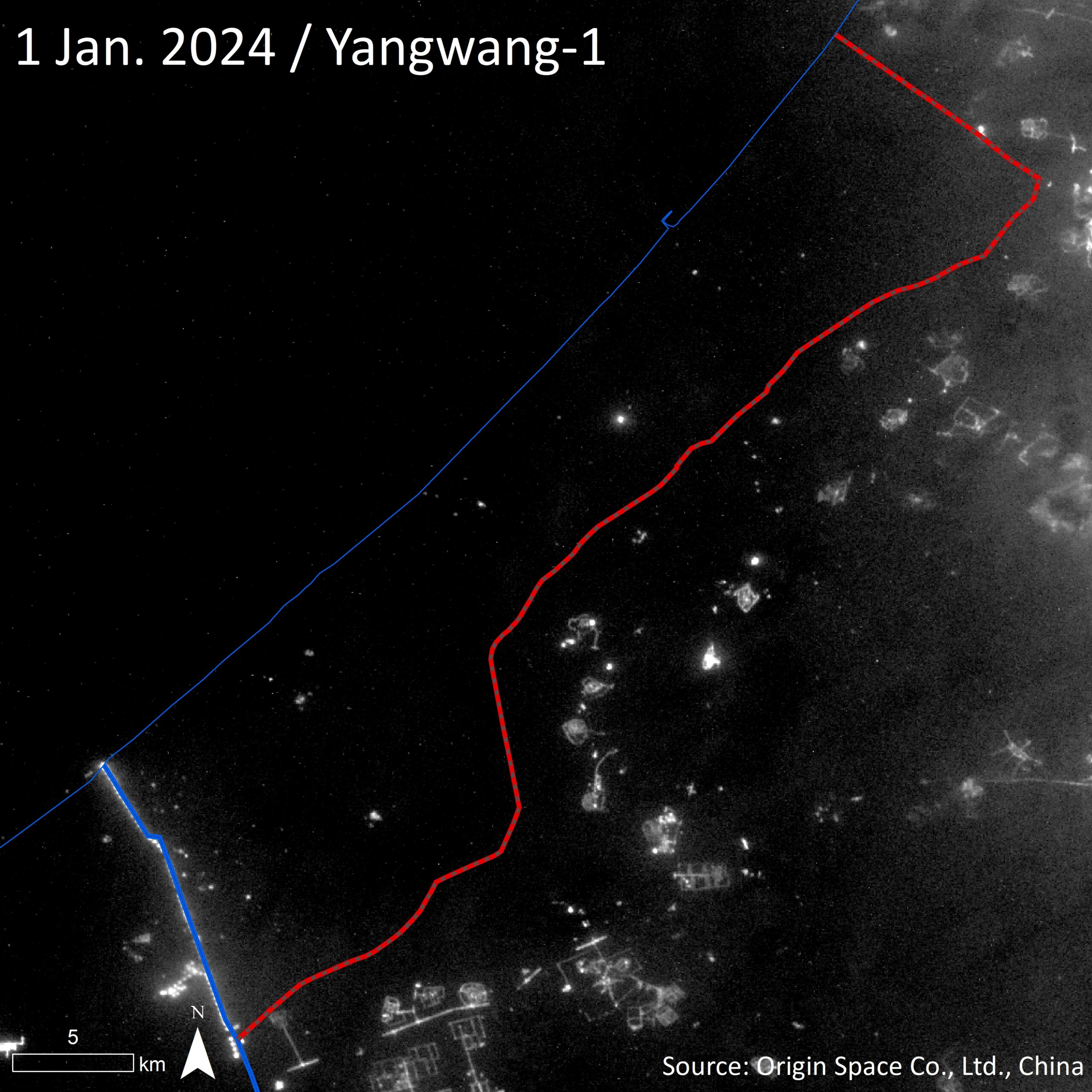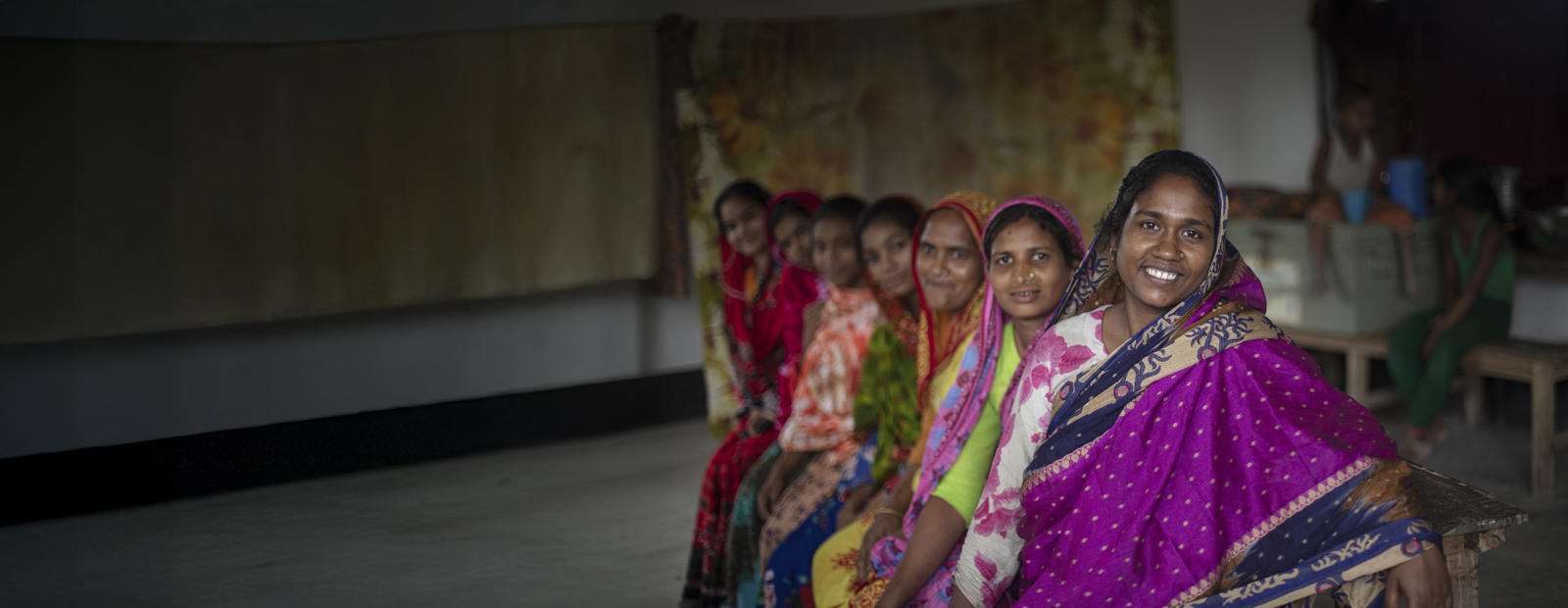After almost five months of brutal conflict, the people of Gaza are suffering immensely, facing illness, hunger, and darkness, warns international aid organization CARE. An analysis of satellite images reveals that Gaza’s cities have experienced an enormous decrease in electricity, with nighttime light in the Gaza Strip reduced by a staggering 84%. Gaza City has witnessed the largest reduction in nighttime light, with a 91% decrease. In Rafah, where over 1.2 million Palestinians have fled to, 70% of the lights have gone off. Moreover, a concerning 70% of hospitals in Gaza have little to no nighttime light, severely impacting healthcare services.
“The conflict in Gaza has plunged its residents into literal darkness, showcasing the extensive damage to infrastructure and the economy, making survival a daily struggle for the people who have survived the war until now,” says Hiba Tibi, Country Director of CARE West Bank and Gaza. Since 7 October 2023, at least 30,000 people have been killed and 70,043 wounded in attacks on Gaza. Over 60% of homes have been destroyed. Around 2.2 million people – the entire population of Gaza – is at imminent threat of starvation. Over 80% of the population is internally displaced, seeking safety from constant attacks in schools, hospitals, and increasingly in makeshift shelters in open areas and streets.
“Satellite imagery offers the most impartial view of the massive devastation in Gaza,” says Dr Xi Li of Wuhan University, lead researcher on the project. “The work of humanitarian aid workers is increasingly hindered, making an assessment of the damage difficult. Our images, taken from 500 miles above the earth, show the destruction and suffering children, women, and men in Gaza must endure. In Gaza City, the worst affected area, the lights have been almost completely switched off.”
Power outages and the breakdown of Gaza’s infrastructure are especially concerning regarding desperately needed healthcare. The number of hospitals with little or no nighttime light was at around 70%, with power outages being particularly severe in Gaza City and North Gaza. “Power means life or death in hospitals. We hear of newborns dying because there is no electricity for the incubators; children ceasing to breathe and mothers dying on the operation table simply because lifesaving machinery switched off,” says Tibi. The lack of electricity in hospitals is especially concerning given only 12 of 36 hospitals are still partially operational (33%) and filled at 349% of their capacity.
The plight of women and children in Gaza is especially distressing, comprising over 70 % of the internally displaced people. Reports indicate an increase in maternal and infant deaths, while cases of diarrhea among children under five have increased by 2,000%. Over 330,000 people struggle with acute respiratory infections. “People drink sewage water, and some have no choice but to eat animal feed. Children are dehydrated and sick, facing catastrophic and life-threatening conditions. Amidst illness and starvation, life has – literally and figuratively – turned completely dark for the people of Gaza,” says Tibi. While some electricity sources were cut off in the beginning of the escalation, Gaza’s single power plant in Deir al-Balah ran out of fuel mid-October. The lack of back-up generators has shut down bakeries, hospitals, water pumps, and other key services such as sewage treatment facilities.
The ongoing violence hampers humanitarian access to an exhausted population facing starvation. CARE calls for the delivery of essential lifesaving aid into Gaza to be facilitated, including restoring electricity and allowing the provision of fuel to run generators. Civilians in Gaza need a ceasefire NOW to end further death and destruction.
About the analysis:
CARE commissioned Dr. Xi Li of the Laboratory for Information Engineering in Surveying, Mapping and Remote Sensing at Wuhan University, China, to conduct this analysis of satellite imagery of Gaza. He utilized remote sensing images to evaluate the evolution of the conflict in Gaza, by comparing the levels of light in September 2023 and a series of images taken between October 2023 and January 2024. CARE already commissioned Dr. Xi Li on previous occasions, including on similar analyses related to the conflicts in Syria and Yemen.
ENDS
Notes to editors
For media enquiries contact Briony FitzGerald on 0404 117 927 or briony.fitzgerald@care.org.au
About CARE International
CARE International has been operating in Gaza and the West Bank since 1948. Prior to the current conflict, we were supporting about 200,000 Palestinians in Gaza and we continue to support about 300,000 in the West Bank to meet basic food needs, improve farming and agriculture, empower women to earn an income, support women’s leadership, and improve health programs focused on reducing violence against women and girls, sexual and reproductive health, and children’s mental health.
Since the escalation of the conflict, the CARE team in Gaza was able to reach over 250,000 vulnerable displaced people with hygiene kits, shelter items such as blankets and mattresses, and drinking water. CARE also reached over 67,000 people with medical support, including medications, medical supplies, and primary health services.
About CARE Australia
CARE Australia supports women around the globe to save lives, defeat poverty and achieve social justice. We work in partnership with local communities to provide equal opportunities for women that they have long been denied: the ability to earn an income, gain access to their fair share of resources, to lead and participate in decisions that affect their lives, and to be able to withstand the increasing impacts of climate disasters and other crises. www.care.org.au

